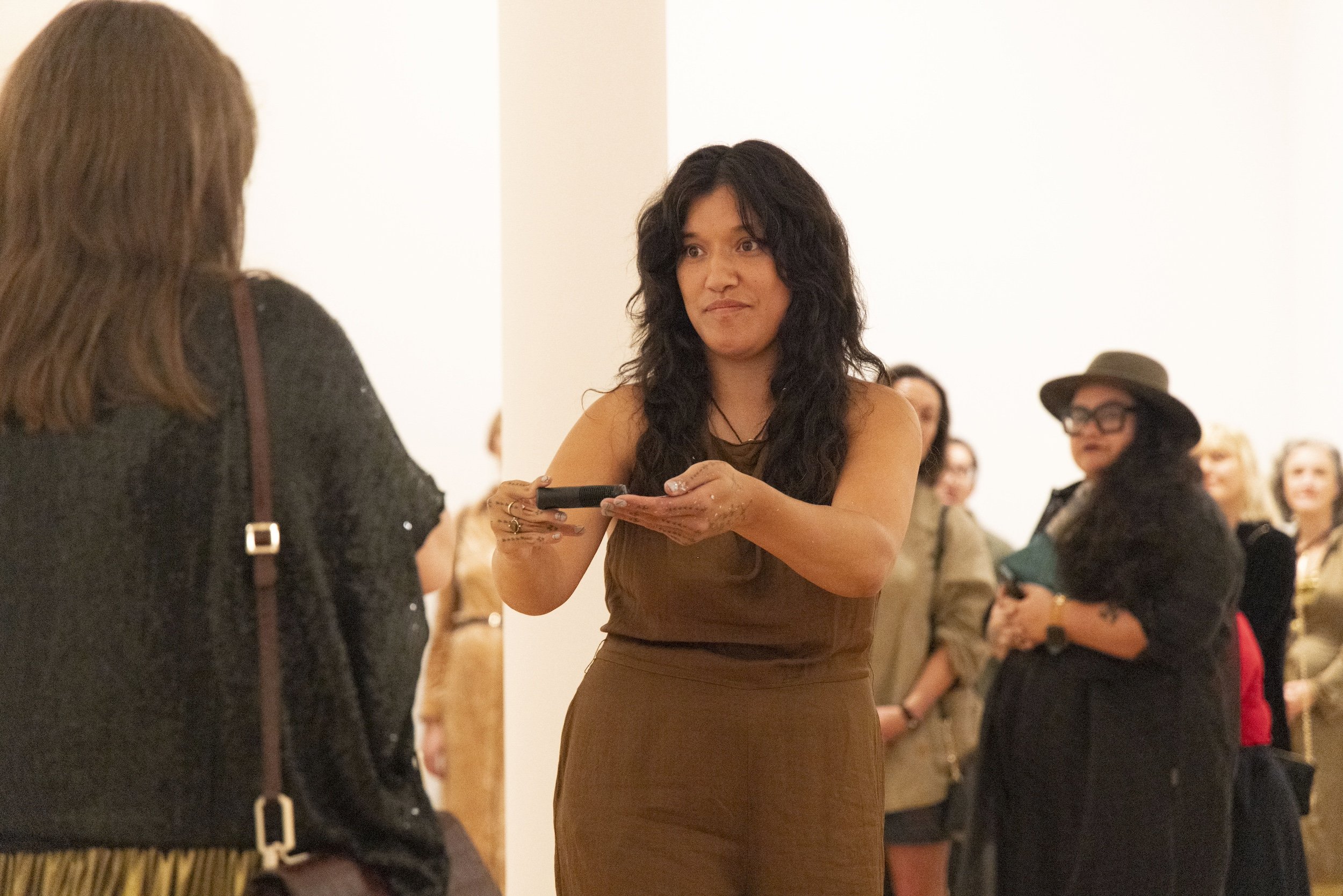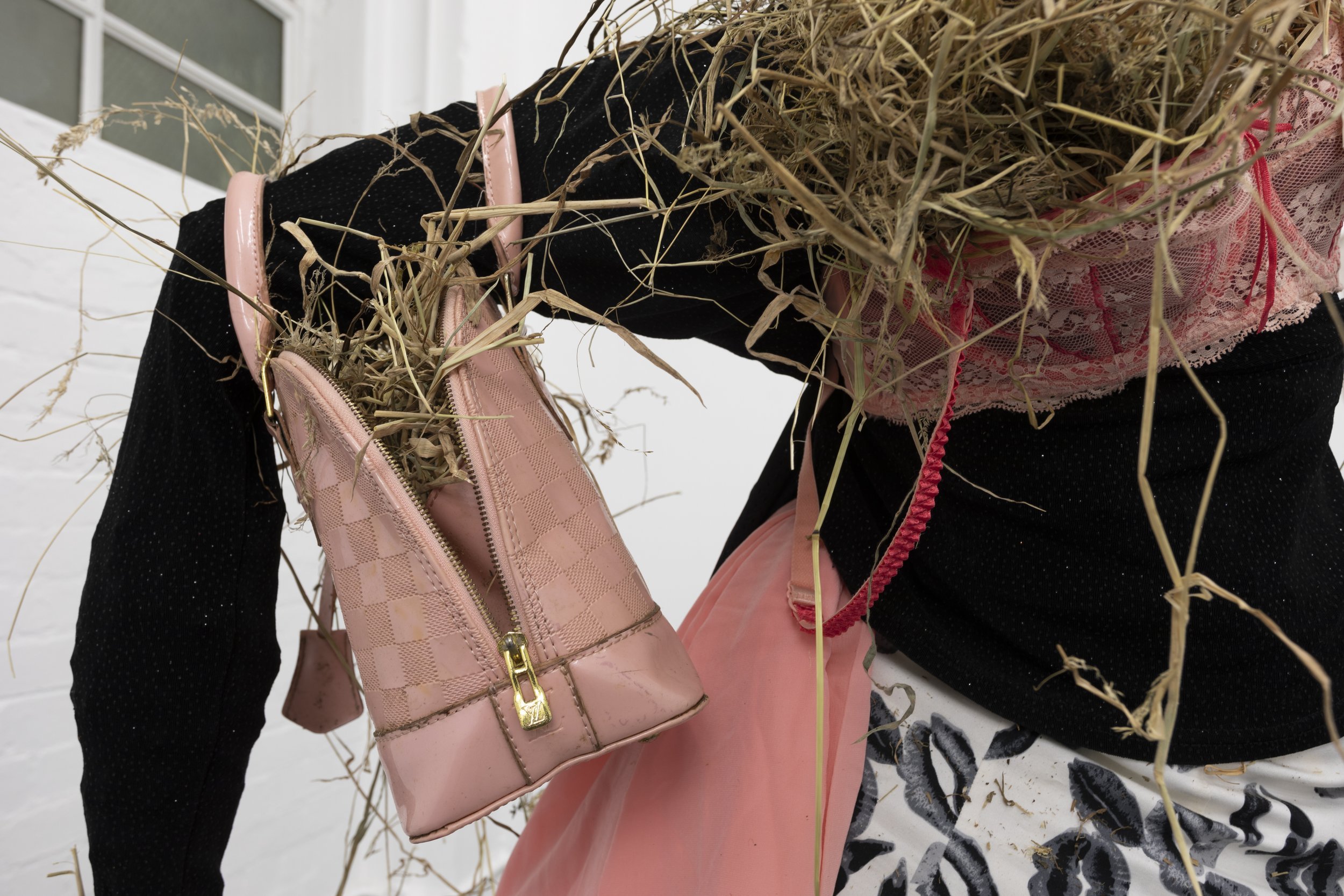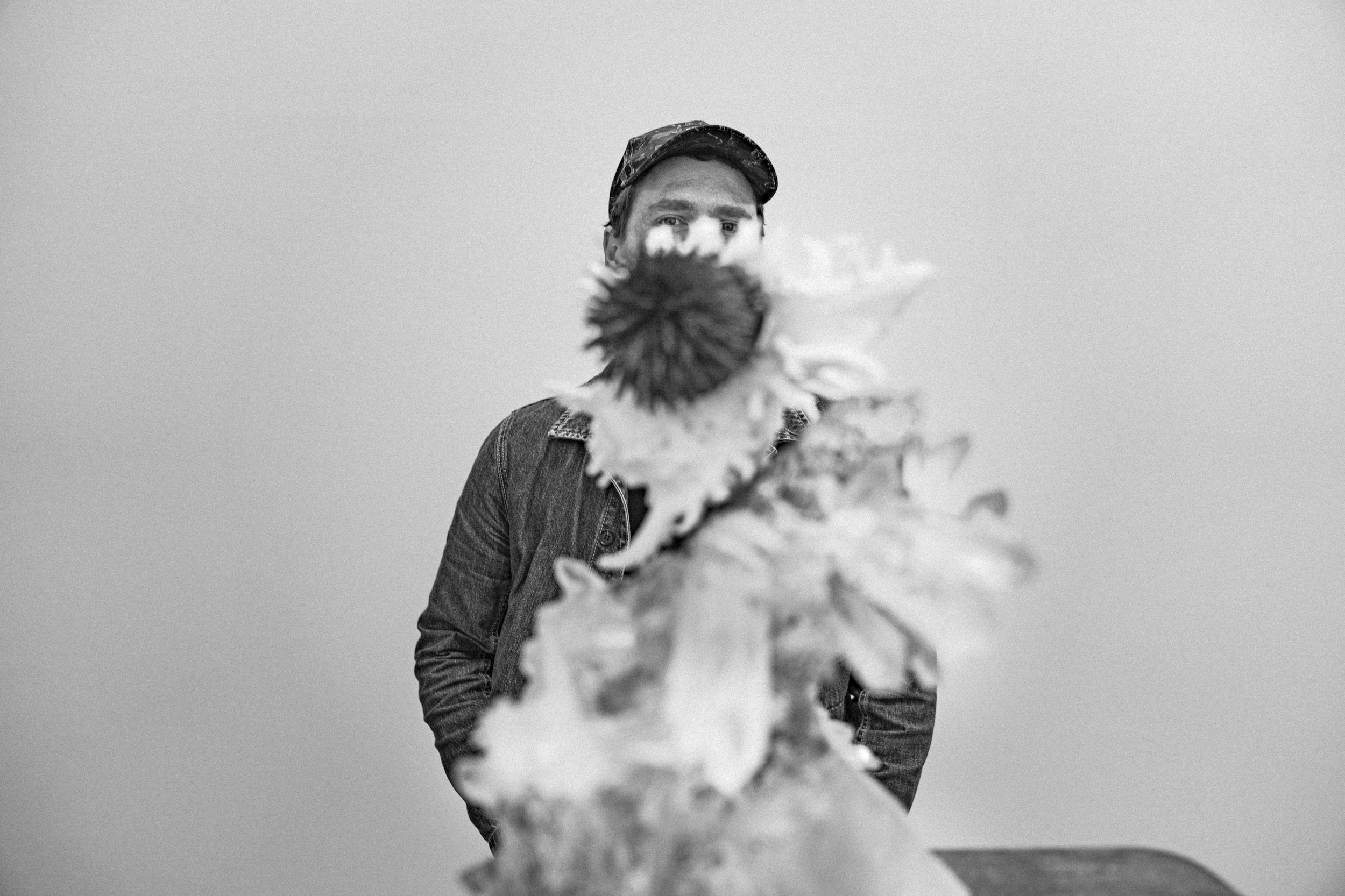Tactile vision
Sam Gaskin speaks to Zhang Xu Zhan about his stop-motion animation Compound eyes of tropical, included in the 11th Asia Pacific Triennial of Contemporary Art at QAGOMA, 30 November 2024 – 27 April 2025.
Tucked away on the third floor of Brisbane’s Gallery of Modern Art (GOMA) is an installation of small but wonderfully expressive waxed-paper and wire creatures. Behind the installation, in a room whose walls are made cave-like with crumpled paper, the creatures come to life in Zhang Xu Zhan’s (張徐展) stop-motion animation Compound eyes of tropical, a standout work at the 11th Asia Pacific Triennial of Contemporary Art (APT).
Based on a Malay fable, the protagonist—part Malaysian mouse-deer, part fox—evades crocodiles, at times turning into a rabbit (and the crocodiles into buffalo and crabs) as Zhang’s telling morphs to accommodate similar stories across cultures of animals outwitting predators. The soundtrack, too, is a hybrid, incorporating Indonesian gamelan and Taiwanese folk drums, dialling up the tension as the mouse-deer, later revealed to be a dancer in costume, leaps over the crocodiles in pursuit of a fly that represents enlightenment.
The work’s expansiveness makes it a metonym for the Triennial itself, which this year gathers 500 works from over 30 countries stretching from Saudi Arabia to the Solomons. The participating artists from Aotearoa are Artists for Waiapu Action (AWA), Zac Langdon-Pole, Jeremy Leatinu’u, Paemanu Ngāi Tahu Contemporary Visual Arts and Brett Graham, whose monumental sculptures, first shown in the 2020 exhibition Tai Moana Tai Tangata at the Govett Brewster in Taranaki, dominate the narrow exhibition hall from GOMA’s entrance to the River Room.
Like Brett, whose father Fred is a celebrated sculptor, Zhang’s practice builds on a family tradition. Born in Taipei in 1988, he grew up spending time at the Hsin Hsin Paper Offering Store, a family business that sold paper sacrifices representing people, mansions, sports cars and more.
Images: Zhang Xu Zhan, installation view, 'The 11th Asia Pacific Triennial of Contemporary Art', GOMA, 2024 / © The artist / Photograph: C Callistemon, QAGOMA
We met in Brisbane for the opening of the 11th Asia Pacific Triennial. What did you think of the show, and what did it mean to you to take part?
For me, what is most interesting about large-scale international exhibitions is the opportunity to interact with artists from other countries, share perspectives, and exchange ideas. Through these exchanges, I can gain insights into what artists of our generation are contemplating—both their commonalities and differences. When creating, artists often spend long periods alone with themselves. However, exhibitions are about engaging with the audience. So, for me, coming together with artists from other countries at these moments is always fascinating and deeply rewarding.
One of the challenges the APT presents to visitors is its huge variety of works from artists with very different traditions and histories. What new commonalities or resonances did you find with artists and works from other countries at the Triennial?
This edition showcased many outstanding Indigenous artists, who are very skilled at using materials. Many similar materials are explored by different artists, but each artist’s understanding of nature and spirituality, shaped by their personal experiences and environments, expresses distinct and profound creative visions. Despite language differences among their countries, I still believe that great art has the power to transcend language, spread influence, and speak for itself.
What was it like growing up with the creation of paper offerings?
When I was a child, we were more likely to help with housework or act as child labour in these production processes [laughs]. These objects were always part of our daily life, even to the point of sleeping in the same room with them. So, when we interacted with them, we learned to view them without relying on stereotypical perspectives of culture. It felt less like observing a cultural practice and more like living life through the process of creating these ritual objects. It wasn’t until I was older that I realised how different these daily routines were from other people’s experiences.
Stop-motion animation is a notoriously time-consuming activity. How many hands and hours do you estimate went into making Compound eyes of tropical?
The previous work took a year and a half, and this one took three years. At the beginning, the crew wasn’t very big, and the regular shooting team was just me and two alternating assistants. Of course, in the future, I hope to have the funding to rent a larger studio space for filming. That would likely improve efficiency.
You used wax paper and metal wire to create the characters, but I’m also curious how you created the water—such a challenging subject that it’s still the metric by which video game graphics are judged.
I pay particular attention to the use of textures and materials in my images, including creating a kind of ‘tactile vision’ effect. The materials themselves are not only visually represented but are also used as part of the directing process. ‘Water’ in stop-motion animation represents a significant breakthrough for me. In my previous work, Si So Mi, I used plastic wrap to depict a mouse drowning. For Compound eyes of tropical, the story largely takes place in river settings. Historically, water effects in stop-motion are usually depicted using liquid-like slime or petroleum jelly. However, because most of the characters in Compound Eyes of the Tropical are made of paper, I didn’t want any of the materials to damage or dirty the paper. So, I used translucent materials like glassine, polypropylene file bags, and book covers cut into fine strips, which were then manipulated frame by frame to simulate the movement of water. These materials create a unique visual vocabulary and the appearance of ripples, allowing the crocodiles to swim fluidly, dive underwater, and emerge from the surface. This unique visual language became an important part of the film’s overall visual style.
In Compound eye of tropical, when the hero finally grabs the fly it has been chasing, the hero shatters into tiny pieces, your representation of them attaining enlightenment. How do you describe your own spiritual beliefs, and how do they relate to your art?
I think I’m a bit of a Capricorn artist—I tend to fully commit to a belief or vision and pursue it single-mindedly until it takes shape. This kind of dedication to personal ideals and dreams is a lot like my spiritual faith.
The title Compound eyes of tropical doesn’t sound very natural in English because ‘tropical’ is an adjective that doesn’t modify a noun—tropical what? Could the title also be translated as Compound Eyes of the Tropics or Tropical Compound Eyes?
Haha! Yes, part of it is that my English isn’t very strong, so the semantic interpretation is different. Sometimes I think about English in a way influenced by Chinese logic. For instance, ‘eye drop’ in English refers to eye medicine, but when I first heard it, I thought, ‘Why would putting in eye drops make your eyes fall out?’ Haha! I enjoy the kind of ambiguity that leaves room for imaginative interpretations, and that often appears in my work. I think this is reflected in my choice of titles as well.












